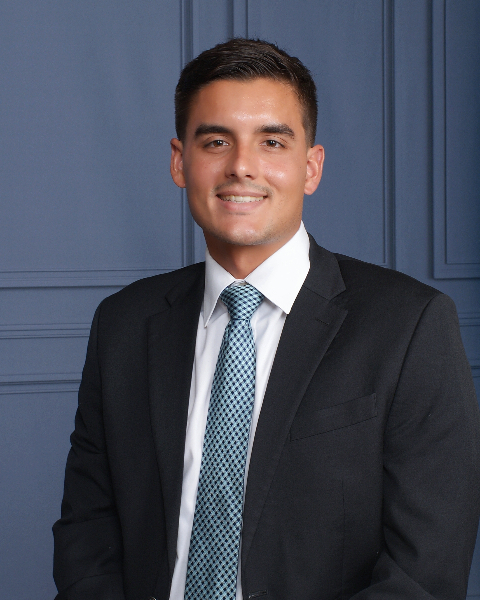PQA 03 - PQA 03 Gynecological Cancer, Pediatric Cancer, and Professional Development Poster Q&A
3473 - Radiate & Educate: Empowering Future Physicians through an International Radiation Oncology Student Newsletter
Monday, September 30, 2024
8:00 AM - 9:00 AM ET
Location: Hall C
Screen: 24

Anthony Alanis, BS
University of Texas Rio Grande Valley School of Medicine
McAllen, TX
Presenter(s)
A. L. Alanis1, D. T. Bergman2, B. Sharafi3, and J. R. Gunther4; 1University of Texas Rio Grande Valley School of Medicine, Edinburg, TX, 2Dartmouth Geisel School of Medicine, Hanover, NH, 3Ross University School of Medicine, Two Mile Hill St. Michael, Barbados, 4Department of Radiation Oncology, The University of Texas MD Anderson Cancer Center, Houston, TX
Purpose/Objective(s): The field of radiation oncology is frequently overlooked by medical students due to limited exposure during traditional medical school curricula. To address this gap, creative and collaborative initiatives aimed at increasing medical student exposure while also creating opportunities for medical student engagement are vital. Here, we present the inception, 1-year progress, and future goals of a student-led radiation oncology quarterly newsletter: RadOnc Student Scan, hosted by the Applied Radiation Oncology (ARO) journal. Materials/
Methods: The RadOnc Student Scan newsletter was created in collaboration with ARO. It was published on the ARO website, X account (formerly Twitter), and as a newsletter to their subscribers. The educational impact of the newsletter was estimated via number of social media views, online newsletter clicks, and newsletter authorship opportunities for all issues.
Results: In 2023, a team of 7 medical students from 5 different medical schools across 3 countries collaborated to publish 5 issues of the RadOnc Student Scan newsletter. They researched and communicated key concepts in radiation therapy, interviewed 6 faculty and residents from outside institutions for Q&A sections, summarized 21 recent articles, and shared networking opportunities such as radiation oncology electives and conferences. Throughout the year, 4 issues of the newsletter were published and shared with an average of 4,428 subscribers. Specifically, the 3rd and 4th quarterly issues of 2023 were shared on X and Facebook, garnering views of 3,414 and 2,074, respectively. The 1st quarterly issue of 2024, shared on X on 1/30/24, accumulated 578 views as of 3/9/24. To ensure sustainability and maximize opportunities, a new team of students was recruited through the Radiation Oncology Education Collaborative Study Group (ROECSG) to serve as editors. There will be 6 editors per issue that contribute to an estimated 4 issues per year, resulting in approximately 24 new opportunities for medical student engagement.
Conclusion: The RadOnc Student Scan newsletter has proven to be an effective tool to increase medical student exposure to radiation oncology. Through collaborative efforts and engaging content, we successfully disseminated knowledge, facilitated networking opportunities, and fostered interest in the field both for the newsletter audience and members of the editor team. Moving forward, we are planning for sustainability through continued recruitment of dedicated student editors and impact evaluation through qualitative surveys linked to issues. These measures will support the ongoing success and impact of this initiative in bridging the gap between medical education and the dynamic field of radiation oncology.
Purpose/Objective(s): The field of radiation oncology is frequently overlooked by medical students due to limited exposure during traditional medical school curricula. To address this gap, creative and collaborative initiatives aimed at increasing medical student exposure while also creating opportunities for medical student engagement are vital. Here, we present the inception, 1-year progress, and future goals of a student-led radiation oncology quarterly newsletter: RadOnc Student Scan, hosted by the Applied Radiation Oncology (ARO) journal. Materials/
Methods: The RadOnc Student Scan newsletter was created in collaboration with ARO. It was published on the ARO website, X account (formerly Twitter), and as a newsletter to their subscribers. The educational impact of the newsletter was estimated via number of social media views, online newsletter clicks, and newsletter authorship opportunities for all issues.
Results: In 2023, a team of 7 medical students from 5 different medical schools across 3 countries collaborated to publish 5 issues of the RadOnc Student Scan newsletter. They researched and communicated key concepts in radiation therapy, interviewed 6 faculty and residents from outside institutions for Q&A sections, summarized 21 recent articles, and shared networking opportunities such as radiation oncology electives and conferences. Throughout the year, 4 issues of the newsletter were published and shared with an average of 4,428 subscribers. Specifically, the 3rd and 4th quarterly issues of 2023 were shared on X and Facebook, garnering views of 3,414 and 2,074, respectively. The 1st quarterly issue of 2024, shared on X on 1/30/24, accumulated 578 views as of 3/9/24. To ensure sustainability and maximize opportunities, a new team of students was recruited through the Radiation Oncology Education Collaborative Study Group (ROECSG) to serve as editors. There will be 6 editors per issue that contribute to an estimated 4 issues per year, resulting in approximately 24 new opportunities for medical student engagement.
Conclusion: The RadOnc Student Scan newsletter has proven to be an effective tool to increase medical student exposure to radiation oncology. Through collaborative efforts and engaging content, we successfully disseminated knowledge, facilitated networking opportunities, and fostered interest in the field both for the newsletter audience and members of the editor team. Moving forward, we are planning for sustainability through continued recruitment of dedicated student editors and impact evaluation through qualitative surveys linked to issues. These measures will support the ongoing success and impact of this initiative in bridging the gap between medical education and the dynamic field of radiation oncology.
